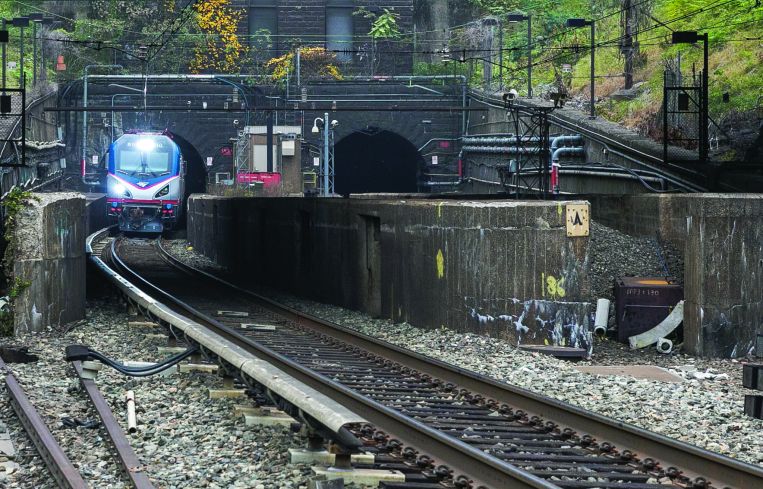Gateway Tunnel Budget Increases to $12.3B
By Aaron Short August 31, 2021 4:23 pm
reprints
A long-awaited, underwater tunnel project is on the path toward its connection to the nation’s Northeast Corridor rail system, even though its bill is getting a little larger.
The Gateway Program Project Partners, which includes a consortium of state development and transportation entities from New York and New Jersey, sent the federal government an updated $12.3 billion proposal for the Hudson Tunnel Project, 6 percent higher than last year’s $11.6 billion estimate, officials said Friday.
Once the Federal Transit Administration (FTA) signs off on funding for the project, construction could begin as soon as August 2023.
Both New York and New Jersey governors praised the latest plan’s progress.
“The Hudson Tunnel Project is of the utmost importance to the economic well-being of New Jersey, our region and our country,” New Jersey Gov. Phil Murphy said in a statement to ROI-NJ. “The updated financial plan that is being submitted today exhibits the commitment of our state and that of our partners to the commencement and completion of the single largest critical infrastructure project in the United States.”
And New York Gov. Kathy Hochul told Streetsblog NYC on Friday that the state’s economy “will depend on how quickly we get this project completed” and that she was “pleased that we have cleared another important hurdle.”
The revised plan, which the FTA helped develop, includes the construction of two-track rail tunnels below the Hudson River, the rehabilitation of the existing 110-year-old North River Tunnel, and the finalization of the Hudson Yards concrete casing just west of Penn Station.
Gateway officials were able to shave some $2 billion off the project’s initial cost estimate, due to savvy property acquisitions and advanced design work that involved taking borings of the Hudson River bedrock. And the project’s cost estimate is down $400 million from 2017, when it was $12.7 billion, officials said.
Now, Gateway is seeking $5.6 billion from the FTA’s Capital Investment Grant Program. The states of New York and New Jersey and the Port Authority of New York and New Jersey will contribute $6 billion, and Amtrak will chip in $1.4 billion.
But the cost is still higher than last year’s estimate. Runaway inflation in the construction sector and the project’s many delays were the main factors for the cost increase, Gateway officials said. The Hudson tunnels could have been midway through their completion if the Trump administration hadn’t stymied the launch of the rail tunnel and threatened to shut down the government before approving any federal funding for the rail program.
The Biden administration signaled in March that it would restart Gateway after a three-year delay, and approved the project’s environmental assessment in May.
“The waste of time has been expensive for the project and the fact we waited years to get the environmental assessment done after being submitted to the feds in 2013 has been really difficult to deal with,” said Brian Fritsch, campaign manager of the Build Gateway Now Coalition and a planner with the Regional Plan Association.
Another potential roadblock to the project’s completion was removed when former Gov. Andrew Cuomo resigned in August. The Cuomo administration published a report in December questioning whether a new tunnel was necessary, and threatened to withhold state funding unless the existing Hudson rail tubes were repaired first.
An Amtrak spokesperson said the railroad was moving forward with the project as originally planned.


